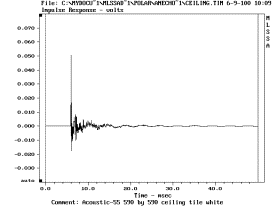
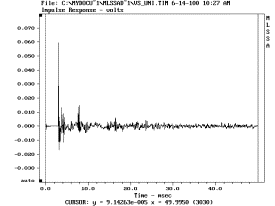
MLSSA manual states that the Windowing of the Impulse Response before reflection should theoretically produce an Anechoic result. The low frequency limit will simply be 1/Time in milliseconds. The following report will compare two Impulse Responses, first from a large 4πSpace Anechoic Chamber against the second from Amina office having a ceiling height of 2.5 meters producing a reflection time of 7.84ms assuming mic to source distance is 1 meter at half ceiling height. Next the different Window algorithm also will be investigated. Finally the difference of distance between mic to source will be checked.
|
Panel
Material |
:
|
sensored |
Measurement
System |
: |
MLSSA |
|
Panel
Thickness |
:
|
sensored |
Mic
to Source Distance |
: |
2
Vs 1 meter |
|
Panel
Size |
:
|
sensored |
Acquisition
Length |
: |
3637 |
|
Panel
Surface Finishing |
:
|
sensored |
Antialiasing
Filter |
: |
Chebyshev |
|
Panel
Stuck down by |
:
|
sensored |
Bandwidth |
: |
20kHz |
|
Exciters
No. & Type |
:
|
sensored |
FFT
Window |
: |
Rectangular |
|
Exciters
Holder |
:
|
sensored |
FFT
Size |
: |
3030 |
|
Exciters
Position 1 |
:
|
sensored |
Best
Resolution |
: |
20Hz |
|
Exciters
Position 2 |
:
|
sensored |
FFT
Mode |
: |
Sensitivity
8W
- 2/1m |
|
Wires
Stuck down by |
:
|
sensored |
FFT
start to end time |
: |
50ms
Vs 4ms |
|
Type
of Frame |
:
|
sensored |
Hanging
or on Floor |
: |
Hanging |
The Impulse Response on the left is from an Anechoic Chamber with no reflection and will be Windowed from 5.841ms to 55.836ms. The one of the right is from Amina office with all the unwanted reflections and will be Windowed from 2.88ms to 6.88ms. 7.84ms was not used because the Impulse Response shows early reflection.


MLSSA warn that if an Impulse Response is Windowed before it is completed then a lot of information will be lost. This following comparison will provide a good demonstration of the effect. MLSSA suggest to use Half-Hamming Window instead of Rectangular which could help by assuming the Impulse Response gradually dies off rather than chopped off. MLSSA warns again that Half-Hamming Window will be less detailed compared to Rectangular Window. The two Frequency Responses will be Overlay to provide a visual difference between them.
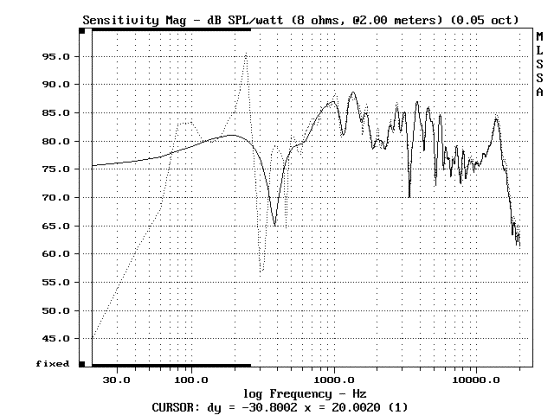
One can clearly see distinct difference below the warning line near to 300Hz. While above the warning line there are still much difference up to 700Hz.
Now to see if 4ms Window using Half-Hamming will improve the situation (left graph) and is there any difference to Rectangular Window (right graph)?
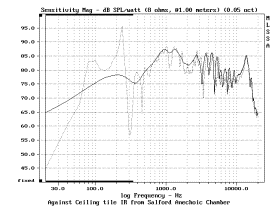
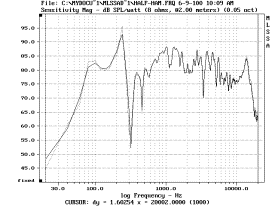
The answer clearly is NO for both cases. Half-Hamming Window is of no help what so ever because it changes the result completely up to 13kHz (left graph). In full 50ms from Anechoic Chamber both Window have little to no difference.
Finally the test of measurements at different mic to source distances. First graph on the left shows 1 meter against 2 meters, second graph on the right shows 3 meters against 4 meters.
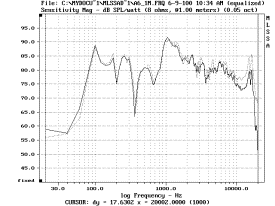
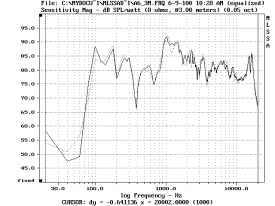
They appear to be different from one another as expected due to the DMLís large size, where further distance allows longer time integration of sound over the entire surface area.
The green warning line in MLSSA is not trust worthy in this case, where all frequency below 700Hz are questionable. The DMLís have long Impulse Response characteristic and require an Anechoic Chamber to carry out reliable measurements. Window type should be Rectangular and not Half-Hamming because it does not improve any thing but degrade accuracy. Finally reference measurements, especially Sensitivity should be kept at 1 meter and not others.
Report prepared by Fa Cheng CHIN, B.Eng.(Hons.)Electroacoustics.
UPDATE 6th November 2005
ACOUSTICS SECTION AUDIO SECTION CAR SECTION
HOME - Technical Website for Acoustics, Audio and Car